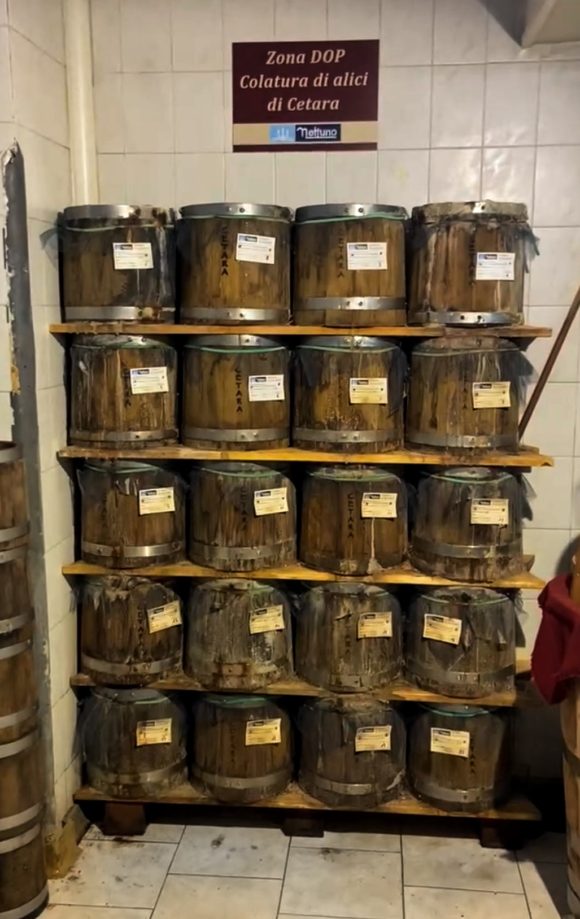“Colatura di Alici di Cetara” officially became DOP-registered name on October 14 2020. That was two years ago! So how come our Colatura doesn’t have that coveted red and yellow label on its package yet?
It takes a lot of patience and paperwork to get that special designation. “DOP” stands for ‘Denominazione di Origine Protetta”, or “Protected Designation of Origin” (PDO) in English. The label protects the name of the product itself, defending consumers against forgeries and misnomers. This means you can only sell a product as “Colatura di Alici di Cetara” if it checks all the right boxes.

Giulio Giordano and his family have sold Colatura di Alici (Anchovy Colatura) since the 1950s through Nettuno, their family business. They have always stayed true to traditional methods of production.
Colatura di Alici is an ancient condiment. It has existed in some form since at least the Roman Empire, where it was produced in huge stone tanks and exported all across Europe. Back then, it was known as “garum”. A thick, dark, syrupy concentration of aged fish bits used to season all manner of dishes. Colatura di Alici is its direct modern descendent. But instead of using fishing refuse, today’s colatura is made from the fermented flavorful flesh of freshly fished anchovies.
How Colatura is made
Nettuno’s anchovies come from the deep, exceptionally salty Gulf of Salerno in Campania. The high salinity means there’s less food available to the anchovies. As a result, they’re much leaner. Their low fat content means the fish are much less prone to rancidity as they age.
All of Nettuno’s anchovies are caught using traditional fishing methods, and Giulio trusts just one fisherman to do this job the right way! Once he’s collected enough fish, he brings them directly to Giulio, often as early as 4am.
Back at the production facility, the workers gut and behead the anchovies. Then, they mix them with salt and place them in a big barrel for 24 hours. During this “ansuzatura” phase, the excess moisture clinging to the insides of each fish drains away. Next, the anchovies are ready to be put in “terzigni”, the traditional wooden barrels used to age Colatura. Arranged in the shape of a crown, the workers at Nettuno meticulously cover each layer of anchovies with a thick blanket of salt until the barrel is full.
Finally, each barrel gets a heavy marine stone on top of the “tomagno” (lid), and the fermentation process begins. Liquid begins to form within one week, but Giulio ages his Colatura for a minimum of three years to allow the flavor to fully develop.
Once the three years are up, Giulio carefully taps the bottom of each barrel and allows the Colatura to drip out. The bits of fish and bone inside the barrels serve as a natural filtration system: the resulting amber elixir is perfectly clear.
When will DOP Colatura be ready?
Nettuno obtained the DOP certification for Colatura in October 2021. The Colatura we currently sell began aging in 2019, before DOP registration for this product even existed! We’ll have to wait until 2024 to see the certification on Nettuno’s packaging. But rest assured, the label is the only difference.
Ready to get cooking with Colatura? Use it to add umami-richness to all manner of dishes, such as Mediterranean Brisket. If you really love it, then Spaghetti con la Colatura is the recipe for you!
